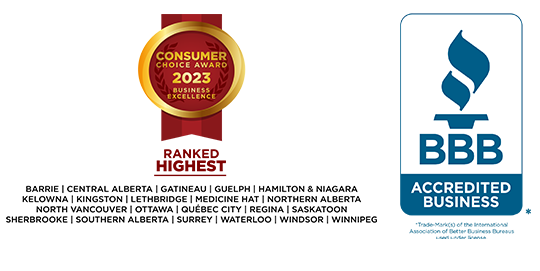Bad debt and the five warning signs to watch for
Debt serves a purpose. It can give the borrower the opportunity to increase their credit score and net worth after repayment and enable a person to make big purchases in cases where cash isn’t realistic. But bad debt - credit cards and payday loans - can cause all sorts of problems for the borrower if they keep a high balance or are unable to pay down the principal.
Good debt vs. bad debt
Good debt includes real estate, student loans, and investment loans. All offer the borrower the opportunity to grow their financial portfolio with low interest rates and, in the case of real estate and investment loans, the chance to make a profit.
Bad debt typically involves credit cards and payday loans. These are loans that increase the cost to the debtor over and above what they initially paid for the product or service. Interest rates are high and if you can’t afford to fully pay off the purchase at the end of the month, your balance can build quickly, making repayment that much more difficult and time consuming.
Good financial habits can usually prevent bad debt from getting out of control but there are certain signs to watch for to know if you’re debt is approaching or at worrying levels.

Five signs of bad debt to be concerned about
Many people don’t realize their debt has gotten out of control until they get a call from debt collectors. Others may have crippling anxiety that they’re on the brink of a financial disaster if an emergency happens and they’re unable to cope.
Regardless of your situation, there are some key signs to keep an eye out for to help you determine if your debt it manageable or if it’s something you might need extra support dealing with.
Here are five signs to look for when it comes to bad debt:
- You’re only making the minimum payment each month – While any amount towards your debt is better than nothing, minimum payments cover a very small fraction of your debt’s principal value. Even with small debts, it could take several years to pay off the amount of the original debt if you only pay the minimum monthly payment. For bigger debts, it’s even more important to pay as much as possible above the minimum payment as it will take significantly longer to pay off the debt.
- You’re using debt to pay for basic expenses – This is a good sign that you’re living beyond your means and debt is getting in the way. If you’re using a credit card for groceries, gas, bills, etc. and you’re unable to pay the balance at the end of the month, and your debt level keeps increasing, you should be concerned.
- You can’t afford to add to your savings – Use the 50-30-20 budgeting rule: 50 percent of your budget should go to essential expenses like groceries, rent/mortgage, and utilities, 30 percent to discretionary spending like shopping, entertainment, and restaurants, and 20 percent to savings. Monthly debt payments should fit comfortably in that 30 percent discretionary spending. If it doesn’t, and your debt is getting in the way of saving, this is a clear sign you have more debt than you can afford.
- You’re applying for more credit cards or increasing your limit – If you’re in a position where you’re carrying a significant balance on your credit cards or have reached your cards’ limit, have either applied for new cards or have requested an increased limit on your cards, these are all signs your debt is untenable. If you haven’t yet but you’re anxious about reaching your credit limits, and the potential consequences of not having money when you need it, you already have too much debt.
- You’re struggling with debt collectors – If you’re missing payments to the point where collectors are calling you and threatening legal action, you must take action immediately. It’s important to act fast in these cases before further consequences arise.
If one or more of these signs applies to you, it’s time to take a hard look at your finances. But all hope is not lost. There are a few things you can do to determine if getting ahead of your debt is something you can do on your own.
What to do next?
- Make a budget – It may seem simple but taking a comprehensive look at your income and monthly expenses will give you a better understanding of where your money is coming from and where it’s going. This will show you if debt repayment is possible on your own and if you do need extra support, will provide your financial advisor with a good launch pad to help.
- Cut costs where possible – By decreasing your expenses, you might be able to stop adding to your debt and will be in better shape to pay it off in less time. Living within your means is key to keeping debt low or non-existent. This may mean cutting discretionary expenses like shopping and entertainment so that you can use most or all of that 30 percent in your budget to pay down debts.
- Start saving – While it may seem daunting, saving doesn’t have to be. A small amount each month can go a long way over time and will provide a cushion of support in unforeseeable or emergency situations. Setting up a direct deposit into a TFSA or investment account you can’t easily access will help keep these funds protected.
If your debt just keeps growing and is causing you significant stress, it might be time to reach out to a Licensed Insolvency Trustee to find out what other options are available to you, such as debt consolidation or insolvency.
Overwhelming debt is not uncommon. In fact, credit card debt in Canada has reached its highest levels as of December 2022. According to Statistics Canada, Canadians added over $800 million to their credit card debt in the month of December 2022, bringing the outstanding debt to a record high of $91.5 billion nationally. Compared to 2021, Canadians debt with chartered banks grew 13.8 percent in 2022.
Getting control of, or trying to get ahead of, unmanageable debt doesn’t have to be scary. Our team at MNP have decades of experience helping clients reach their financial goals and become debt free.

